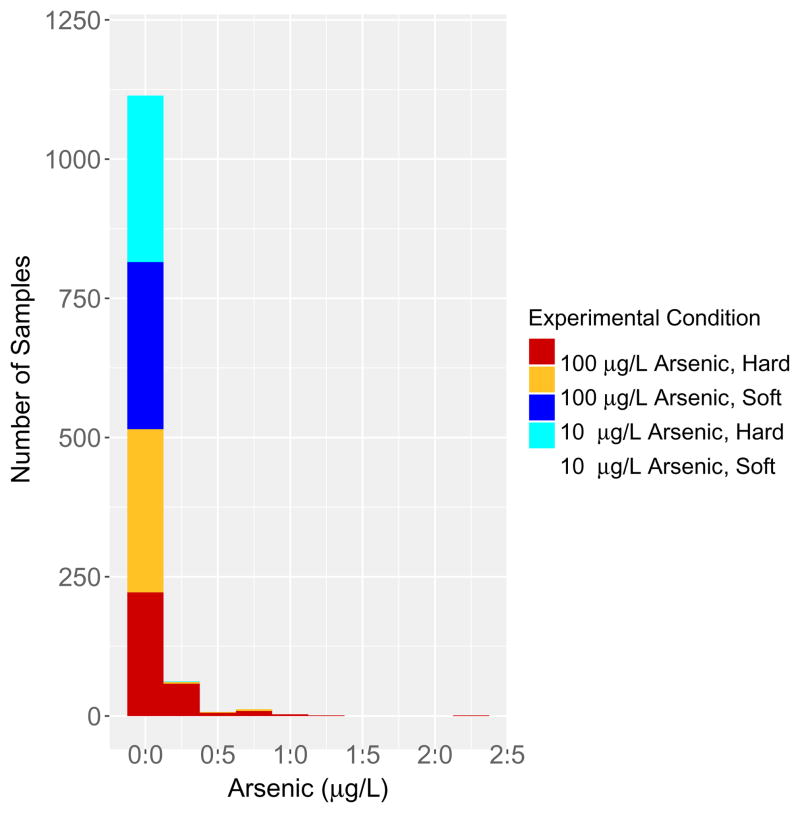Figure 4.
The ability of the ZeroWater® pitcher filter to remove arsenic from 100 liters of water (measured in 1 L aliquots) containing 10 μg/L or 100 μg/L arsenic dissolved in either soft water or moderately hard water. Three lots of filters were tested. ICP-MS was used to measure arsenic in a total of 1,200 samples. Data are plotted in a stacked bar chart. The Y-axis represents the number of samples plotted as a function of the arsenic concentration measured in the filtered water (X axis). Data in each bin is centered on the value (e.g., the first stacked bar is centered on 0, indicating that the arsenic concentration in those samples was between the limit of detection of 0.05 μg/L and <0.125 μg/L. The second bar from the left is centered on 0.25 μg/L, indicating that the arsenic concentration in those samples is >0.125 μg/L and <0.375 μg/L. An increase in the hardness of the water reduced the ability of the ZeroWater® filter to remove arsenic from the 100 μg/L solution according to a Fisher’s exact test (p < 2.2e-16).

